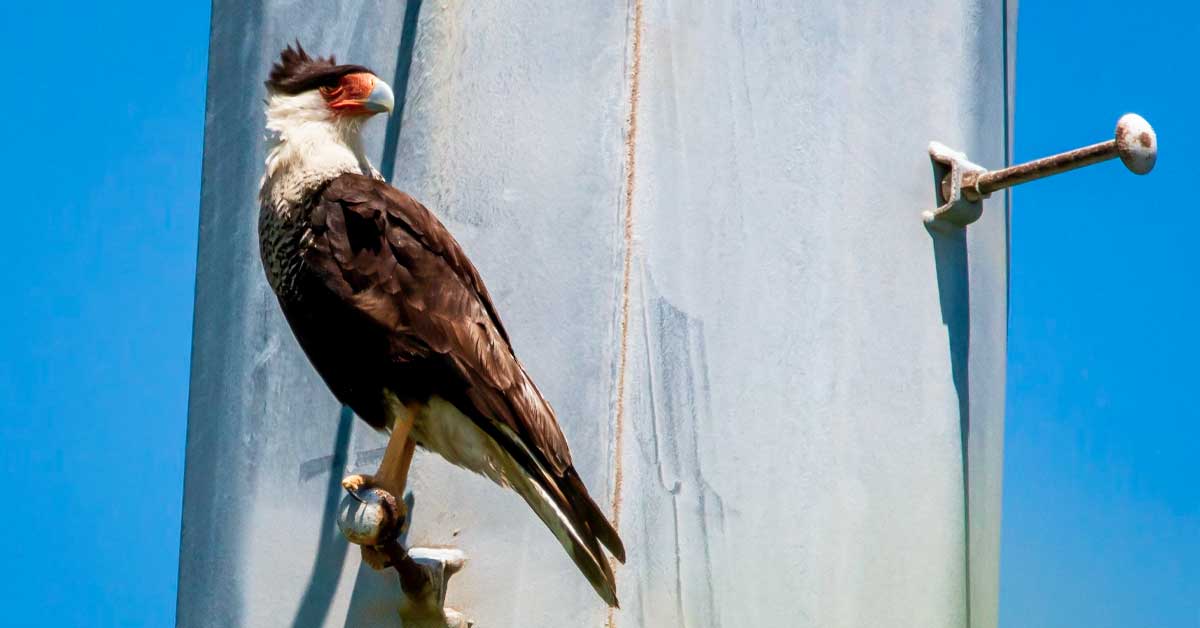You’ve seen scavenger birds in movies where the protagonist gets lost in the desert with vultures, crows, and ravens up above waiting for their next meals.
But not all scavenger birds are symbols of doom. Others, like eagles, owls, and kites, just prefer feeding on other animals’ dead remains.
3 Reasons Why Scavenger Birds are Actually Important
The media always give scavenger birds a bad rep, but they’re actually an important part of the food chain.
- Stops diseases from spreading. The ecosystem NEEDS scavenger birds that eat the remains of dead animals, which otherwise could be harmful to humans or other animals.
- Scavenger birds scatter organic material. In doing so, scavenger birds are able to fertilize plants as they move from one place to the next.
- Consume leftovers of organic waste. Aside from dead animals, scavengers also help the environment because it eats all kinds of wastes. Sometimes, these wastes are toxic to the environment and other living things.
Without these birds, our waters would be contaminated, our lands filled with dead animal carcasses, and organic trash scattered all over.
10 Scavenger Birds that Eat Dead Animals
There are more than 10 bird species considered scavenger birds, but these 10 are the most popular ones:
1. Buzzards (Buteo buteo or Buteos)
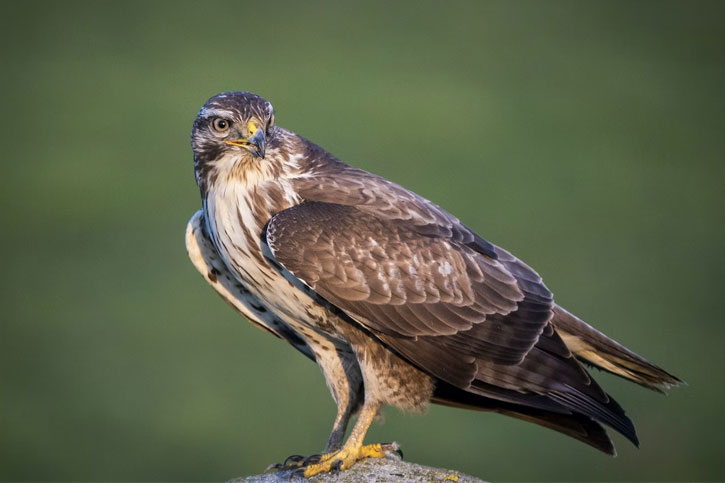
Buzzards are not as common as the term “hawk,” but they come from one huge family. Hawks are considered one of the 30 species of buzzards.
- What do buzzards eat: Buzzards gladly prey on live animals like shrews, mice, voles, rabbits and other birds (usually in the pigeon and crow families). They also eat earworms. These birds don’t say no to other animals’ carcasses especially in the winter. They like fish carrion best, but they also feed on larger mammals like fox, cat, dogs, and other species that they cannot hunt by themselves.
2. Caracaras (Caracarinae)
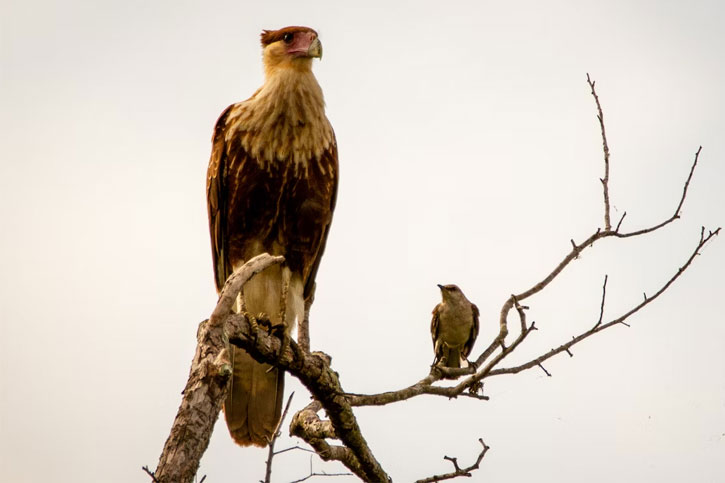
Caracaras are another type of bird of prey, classified within the Falcon family. They are found all over the world, depending on the type of Caracaras. For example, the Crested Caracaras are spotted in Florida and other southernmost US states.
Caracaras are known as opportunistic predators. They are on the hunt 24/7, usually foraging in groups. These birds are usually seen near cities or people, especially in the winter when live animals hide and dead carcasses are far in between.
- What do Caracaras eat: These birds are carnivores, feeding mostly on carrion. But if they can’t find dead animals, they’ll either look into people’s vehicles for food scraps, steal from other raptors, or catch small animals like skunks, rabbits, squirrels, fish, insects, and other small mammals and amphibians.
3. Condors (Vultur Gryphus or Gymnogyps Californianus)

There are many condor species around the world, but the Andean condor (Vultur gryphus) and the California condor (Gymnogyps californianus) are the only two condors found in North America. As its name suggest, California condor is a California-based scavenger bird.
Condors are anti-social birds that are in serious danger of extinction. They are massive birds (one of the largest in the world), which means they can easily intimidate many animals.
- What do Condors eat: The condor’s main source of food is carrion leftovers, particularly of cougars, bears, horses, deer, and other ungulates. If they can’t find any mammal carcasses, they’re forced to hunt fish, marine mammals, and other small animals (except for birds).
4. Crows (Corvus)
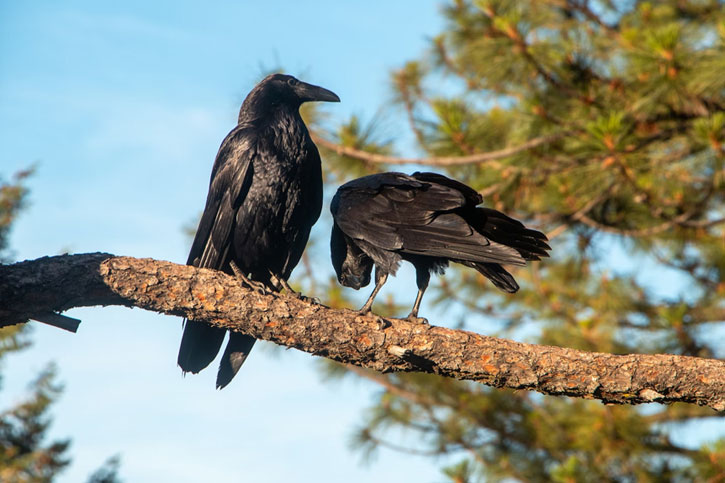
Crows are intelligent scavenger birds that are known to coexist near humans and the forest as well. There are several types of crows around the world, but the one that scavenges for animal carcasses is called Carrion Crow.
Crows are opportunistic in nature, which is why they hang out near vultures during the search for carrion opportunities. Aside from vultures, crows are the favorite scavenger birds of writers and artists when depicting their love for dead animals.
- What do Crows eat: Crows eat various kinds of food, from meat leftovers or live insects, to fruits. The Carrion Crow prefer carrion and even converge with other crows and bully foxes or other birds of prey from their food.
5. Eagles (Accipitridae)
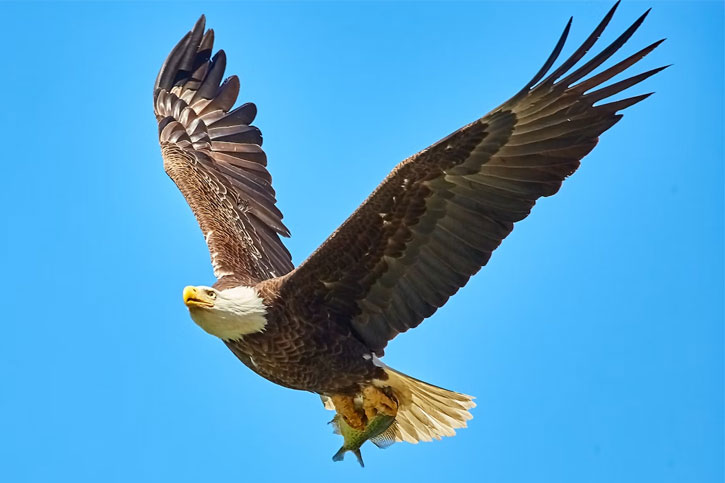
Eagles are classified as an apex predator (a super-predator comparable to killer whales and grey wolves).
There are eagles all over the world – and they’re probably in the higher part of the food chain regardless of their locations – but the Bald Eagle and Golden Eagle are two examples found in the United States.
- What do Eagles eat: These massive birds love hunting fresh fish, large insects, small mammals, reptiles, amphibians, or other birds. Carrion (dead animal carcasses) make up a large part of an eagle’s diet, especially during winter.
6. Gulls (Laridae)
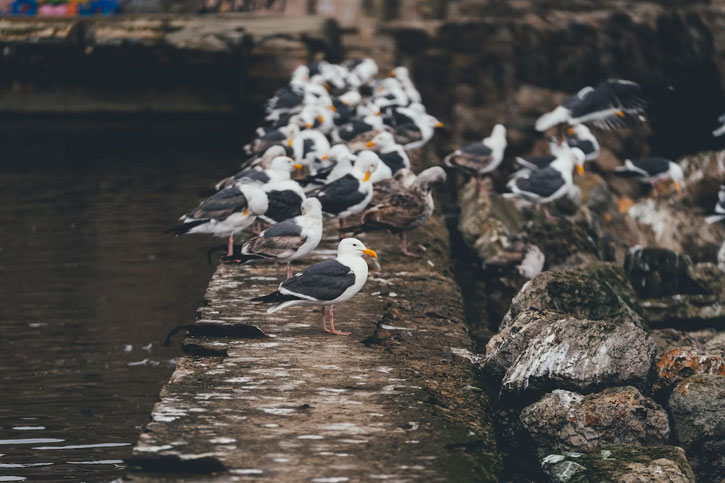
Gulls are tough birds. They can adapt and survive no matter where they land.
Gulls are not picky-eaters (they eat live or dead, as well as human food, fruits, etc.). Aside from this, gulls can be pretty aggressive when it comes to food. They’re known to steal food from people and attack other birds and small animals in order to steal their fish.
- What do Gulls eat: Gulls can survive on all kinds of food, preying on fish, insects, crustaceans, mollusks, worms, mice, seaweeds or berries. They even eat small or young birds, as well as bird eggs. As a true-blue scavenger, gulls also feed on roadkill and carcasses of reptiles, amphibians and mammals.
7. Ravens (Corvus)
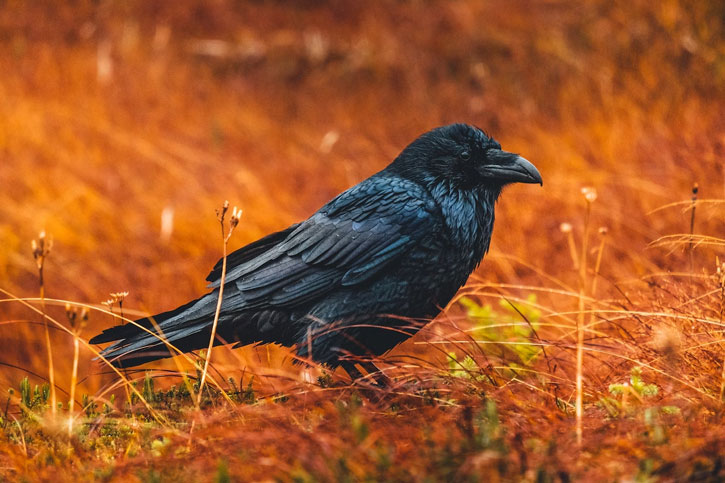
Ravens look similar to crows, grackles and starlings, but ravens are the largest in the bunch.
Many characteristics of a raven are similar to the crow. When it comes to feeding, these opportunistic birds use their wits to hunt, trick, or bully other animals. Crows usually follow wolves and humans to rummage through their leftovers.
- What do Ravens eat: Ravens feed on carrion if available. If not, they eat fruits, berries, and grains. They also raid seabird colonies and other nesting birds, consuming their eggs and young birds.
8. Skuas (Stercorarius)
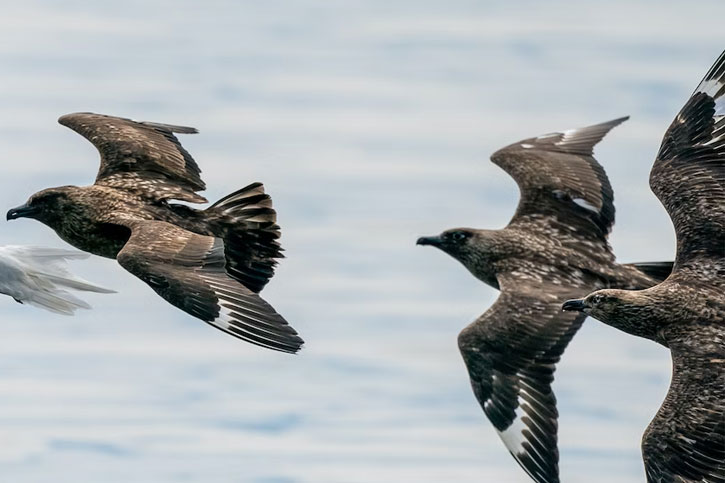
Skuas do not look as fierce as other scavenger birds on this list, but they’re actually the biggest bully in the bird world.
Throughout their lifetime, skuas steal food away from other birds. Their favorite birds to bully are gannets, terns and gulls, even killing their young and eating their eggs.
- What do Skuas eat: Skuas are carnivores. They eat fish, chicks, eggs, and small birds. Skuas also feed on carrion, even those that other species are already eating.
9. Terns (Sterninae)
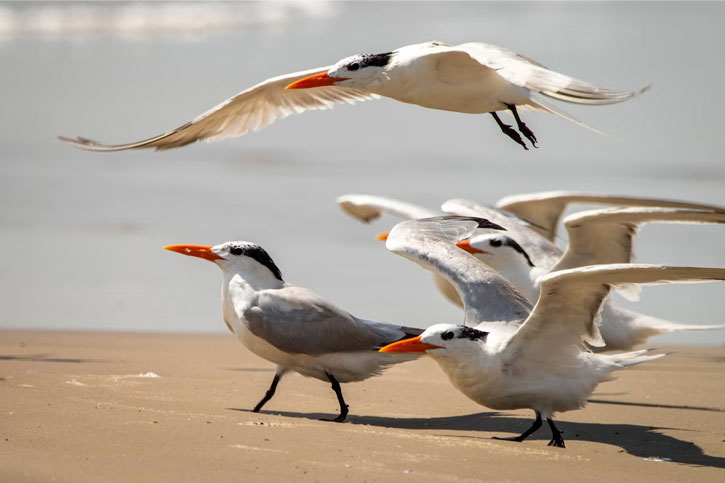
Terns are similar to skuas and seagulls. They hang out near water and dive in water when hunting fish.
However, if the opportunity to scavenge presents itself, terns would gladly steal from each other (or other gulls and fellow tern species), and even take food from humans (mostly from fishermen on boats or people hanging by the docks).
- What do Terns eat: Terns prefer to eat small fish, but also feed on squid, crustaceans and small insects. The good thing about terns is that they also eat discarded human food.
10. Vultures
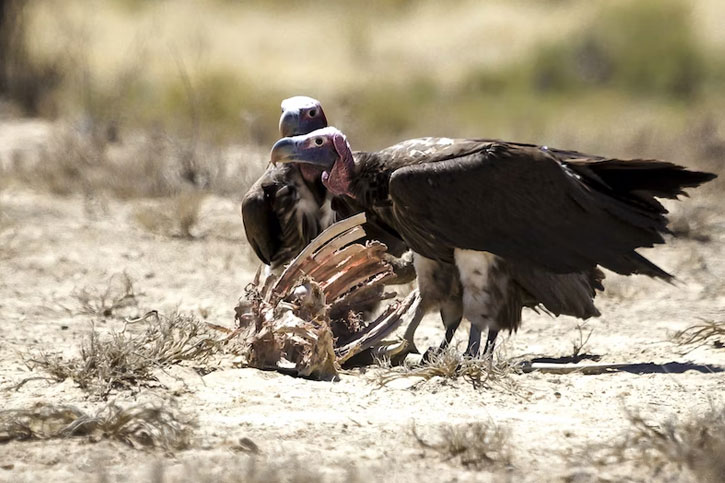
Vultures are grouped into two: Old World Vultures (from countries in Europe, Africa, and Asia) and New World Vultures (found in South and North America).
Vultures are the most famous scavenger birds, probably how Disney features vultures on many of their animated films when they’re trying to elicit a feeling of impending doom.
Did you they don’t just eat carcasses? Yes, these large birds also eat coconuts, pumpkins, grapes, berries.
- What do vultures eat: The diet of North American vultures consist mainly of carrion, rotten fruit, and garbage. They prefer “freshly” dead carrion (birds, amphibians, reptiles or invertebrates), which is why they tend to hang out near animals that look sick or dying.
Common Features of Scavenger Birds
Most scavenger birds (except for condors) are pretty social birds, traveling, hunting and even living in groups. They prefer this lifestyle because scavenger birds band together to take advantage of food they can get as a group. It is why crows and vultures follow sick animals around.
Another common thing about scavenger birds is their size – they’re usually large and intimidating.
Scavenger birds also have special digestive systems, which are required for the amount of meat they consume. The stomachs of scavenger birds can impressively eliminate bacteria found in decomposing meat.
BONUS SCAVENGER BIRD: People used to think that owls only feed on living prey, but new research has found owls eating roadkill of mammals (mostly hoofed animals like deer), rabbits, raccoons reptiles, and other birds.
